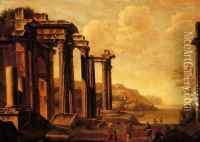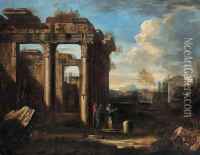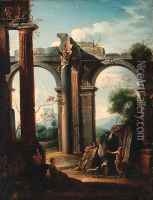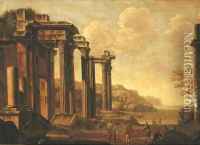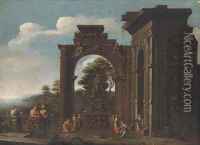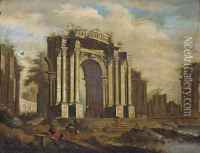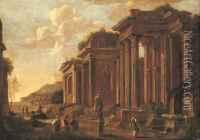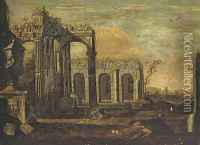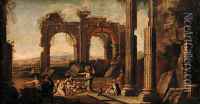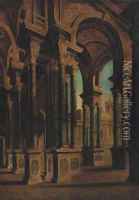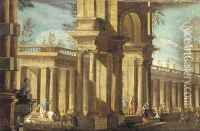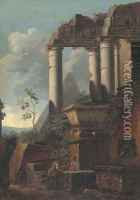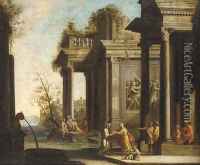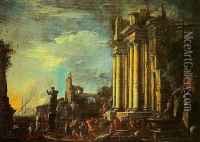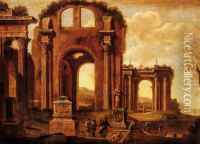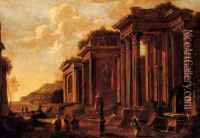Giovanni Ghisolfi Paintings
Giovanni Ghisolfi was an Italian painter born in Milan in 1623. He is recognized for his pioneering contributions to the genre of capricci, which are imaginative and fanciful landscapes featuring ruins. Ghisolfi's work often depicted classical ruins and pastoral scenes, blending architectural precision with a keen observation of nature, thereby creating evocative and atmospheric compositions.
Ghisolfi was influenced by the works of other artists such as Viviano Codazzi and Jan Miel, who were active in Rome during the same period. However, Ghisolfi distinguished himself through his integration of detailed architectural elements with vibrant natural settings. His paintings are notable for their intricate depiction of ruins, which he rendered with a sense of historical accuracy and romantic allure.
Throughout his career, Ghisolfi remained primarily in Milan, where he contributed significantly to the artistic landscape of the city. He was also involved in several projects for local churches and aristocratic patrons, for whom he created large-scale decorative works in addition to his smaller paintings.
Despite his contributions to the development of landscape and capriccio painting in the 17th century, Ghisolfi's work was somewhat overshadowed by his contemporaries in Rome and Naples. Nonetheless, his paintings have been appreciated for their unique blend of architectural precision and bucolic charm, and they have been studied for their influence on later artists in the genre of landscape painting.
Giovanni Ghisolfi passed away in 1683, leaving behind a legacy that has been reassessed and celebrated in more recent years. His works are now recognized not only for their beauty and innovation but also for their role in the evolution of landscape painting in Italy during the Baroque period.
